One summer weekend, I was driving through the forests of Vermont with my friend Geoff. At an ordinary intersection, he said, “Hey, turn down this street. There’s something you should see.”
I turned onto a dirt road, and we passed a sign advertising “Sugarbush Soaring”. It had a picture of a delicate little plane with long wings, and said: “Glider Rides, $79”. In smaller letters, it also offered “Introductory Pilot Lesson, $99”.
“Seriously?” I asked Geoff, “I’m reading that sign correctly? I can ride in a plane for $79, or for an extra $20 they will let me fly it myself??” He shrugged and answered, “I think so. We can check it out if you like.” (This story is from around 1999, and the 2023 prices are 3x.)
I drove down the dirt road and pulled into a little airport that was hidden among the trees. From the car, I could see the runway. And by “runway”, I mean “long strip of grass”. We walked toward the control tower. And by “control tower”, I mean “little gazebo”.
Some small planes were lined up nearby, parked in a lazy arrangement on the grass. I saw a few people walking to or from their planes, and I shouted to one “Where do I go for a lesson?”
“Ask Air Traffic Control,” he answered me, pointing to the gazebo.
Geoff and I walked across the grass and found a single person resting in the shade of the open wooden building. She looked to be about fourteen years old. Before I could ask where to find Air Traffic Control, the walkie-talkie clipped to her belt chirped alive. A raspy voice crackled through, and asked a question I couldn’t understand. “Stand by” she answered, as she hopped down to the ground and craned her neck up to look around the empty sky. “Confirmed, you are cleared to enter the approach pattern, for landing on Runway 22,” she announced decisively into the radio, before clipping it back onto her belt. Then she just stared at me and Geoff.
I must have taken a moment to answer. This was a lot to digest, the airport in a grassy clearing, the teenage air traffic controller, everything. And the butterflies in my stomach about the possibility of flying in a small plane.
“Uh, who do I talk to about the introductory lesson?” I asked. She waved me off to the hangar I could see in the distance, and told me to ask over there. Then back to napping with her baseball cap pulled down over her eyes.
While Geoff I walked in the direction she sent us, I heard a gentle “whoosh” and saw a lithe tiny plane with very long wings touch down onto the grass and gradually come to a lazy rest. The plane was near-silent, and I could see that it had no engine, no propellers. At the moment it landed, the plane seemed to be moving the speed of a car on a country road.
Everything about this world felt like I had stepped through a magic portal.
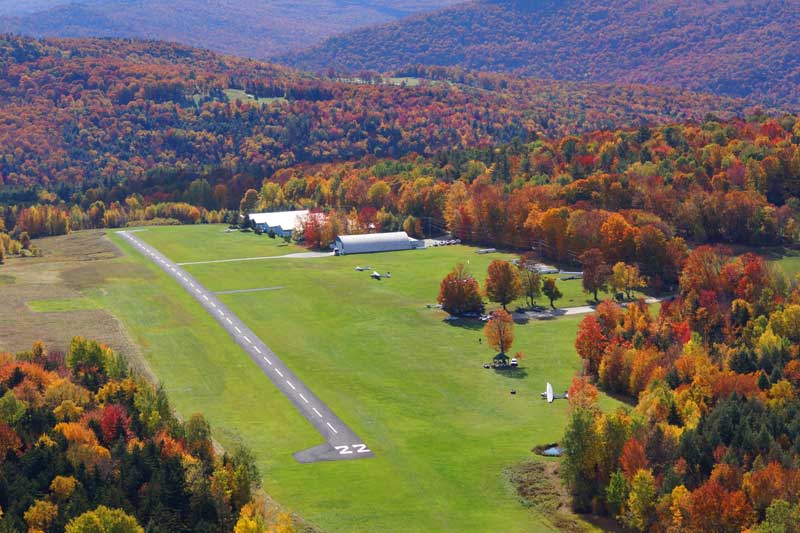
Within a few minutes, I came to understand that the offer on the sign was true. I thought pilots needed very extensive ground school before they could get near a plane, but the instructor laughed and said, “You’re right, for powered planes”. I could pay, and twenty minutes later be in the air, with my hands on the controls and an instructor flying with me. I was incredulous.
I learned the distinction that we were talking about flying sailplanes, also called gliders. Soaring. A sailplane has no engine, but it does have the other control panels and instruments of a conventional powered plane.
I had not known it was possible to fly a plane with no engine.
I did not know if I should be more comfortable, or more frightened, by that fact. They assured me that gliders are much safer than powered planes, because there are hardly any parts to break. Somehow, I believed them.
My friend Geoff was happy to wait for me in the pilot’s lounge. He already had a full pilot’s license for powered planes, and he enjoyed chatting with the other pilots. And so my lessons began:
The glider has ailerons to roll clockwise and counterclockwise. It has elevators to tilt the nose up or down. It has a rudder, to push the tail left or right. Those are the three main types of control surfaces. It also has an altimeter which shows the current height, a variometer which shows whether the height is going up or down, and a horizon to show how the plane is tilted. Radios are optional.
I learned how “right-of-way” works in the air. It’s similar to the street — priority goes to whomever is the most fragile or has the least control. In the street, a car must yield to a bicycle, and a bicycle must yield to a pedestrian. In the air, a powered plane must yield to an unpowered plane. And even an unpowered plane (like a glider) must yield to an unsteerable craft (like a hot air balloon).
I laughed when I asked “So, if a glider goes near a major airport, even the giant passenger planes would have to get out of the glider’s way?” The instructor was not amused, “Yes,” he answered sternly, “but you would also be arrested and fined severely the moment you landed. Gliders aren’t allowed anywhere near major airports.”
I had so many questions.
How does the glider get into the air if it has no engine?
Towed behind another plane, by a half-inch thick nylon rope. That’s it. The two planes are clipped together, and then they take off together and fly together. The tow pilot makes an ascent by coiling around in wide circles, getting ever higher along the way. When the glider pilot wants to let go, there’s a handle to release the rope.
What keeps the glider in the air?
Two things:
Firstly, all planes have a natural “glide ratio”. If a plane is moving forward through the air, with no power, then for every foot it flies forward it will fall a certain distance. This is also called the “L/D” ratio, or Lift-to-Drag ratio. Most commercial passenger planes are around 15:1, meaning that a plane 1000′ in the air with no power could theoretically glide 15000′ forward (around 3 miles). But sailplanes have an L/D over 30:1. And the fancy ones are 50:1 or better. So, one reason gliders stay in the air a long time is they cruise so efficiently. The instructor assured me we would stay close enough to the airport to safely glide to a landing at any time.
Secondly, and far more important, is that gliders are used for soaring. Not only do they descend slowly, but they can actually gain altitude by riding the air currents! Wind blows in three dimensions, I learned, which means that sometimes it blows upward. This is how hawks and vultures fly without flapping their wings. They find rising columns of air and circle within them. Glider pilots learn to do the same.
I was stunned to learn that the world record for glider altitude was higher than a passenger jet. The world record for distance traveled was over a thousand miles. With no engine.
How do you know where the air is rising?
There are a few ways. The easiest is to look for birds circling. They have evolved skills over millions of years, and they are better than us. If you’re lucky enough to see them, then you know where to go. Beyond that, there are three types of lift. Thermal Lift is where hot air is rising. Sometimes a thermal column will be above a dark area on the ground, so you can look for that. Sometimes if you see a small cloud forming, with a concave bottom, it means there is hot air rising underneath. Ridge Lift occurs when horizontal wind reaches a hill or mountain. Often the wind is deflected upward by the terrain, so there could be a long line of lift along peaks. Wave Lift is an atmospheric condition that only occurs high up, so it was not part of my first lesson.
How do I know this is safe?
The instructor laughed. “Well, remember, I’ll be in the plane with you. I’ve been doing this for thirty years, and I promise I won’t let you do anything that won’t get me home safe.”
To summarize my day so far:
- I was about to fly a plane
- It will have no engine
- I will be kept aloft by the wind, like a hawk
- Apparently I shouldn’t be worried by any of this
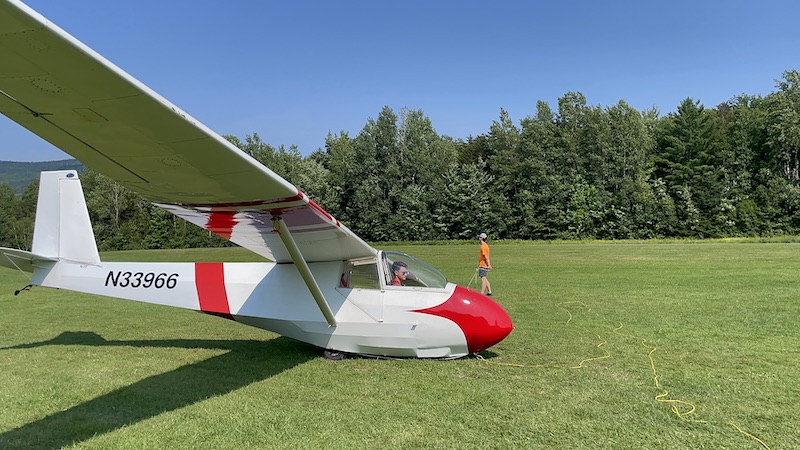
The instructor and I walked together to the runway, where the training glider had already been positioned for us. It was a Schweizer 2-33, and I took this as an auspicious sign. I liked my late Grandfather Schweitzer, and seeing his name on the plane felt a bit like a blessing.
When we reached the plane, I was surprised to find the body soft to the touch. Apparently it’s made of canvas stretched over an aluminum frame. I’m glad my confidence was bolstered by the memory of my grandfather, because the idea of flying in a cloth airplane made me question my decision.
The instructor took me to each flap, explained what it does, and pointed to the inner workings of the plane. Each control surface was connected to the cockpit by a system of cables, which looked just like the brakes and derailleur on my bicycle. He showed me how to check that each panel can move freely, to its full extent from left to right, top to bottom. He urged me to personally slide my pinched fingers along every inch of the exposed cables, and he asked me whether I felt any burrs or breaks or anything imperfect on any of the cables. The process took longer than I expected.
“I saw this plane land a few minutes ago, and now it’s going right back up. So, I assume we did this whole checkout just as a lesson to me, right?” I asked. The instructor looked puzzled, so I asked again:
“Do you do this full checkout before every flight?”
“Nope,” he answered with a smile, “You only do this when you want to come back alive.”
Pilots have a way of saying things so that you definitely remember the lesson.
Take-off is one of the few dangerous moments, so the instructor asked me not to touch the controls until he tells me to, in the air. I don’t think I have ever felt more strongly inclined to obey an instructor.
First surprise: the plane with no engine lifts off first.
As the powered tow plane accelerates, the glider’s long wings let it take off around 30mph. But the tow plane’s own short wings don’t lift off before around 50mph, so it takes off second.
The glider has a big wheel under the pilot seat, which had been bouncing vigorously on the ground. The first thing I noticed at the moment of liftoff was that the rumbling below me became instantly silent. The plane’s movement through the air had a silky smoothness very different from the runway.
My instructor explained that it’s important during take-off for the glider to stay low to the ground until the tow plane lifts off… because if the glider climbs too high then the tow rope will lift the tail of the tow plane and point it at the ground, preventing take-off. Ouch.
Once we cleared the trees at the end of the runway, the tow pilot angled its wings sharply to the left, and we followed. My instructor reminded me of the controls we tested on the ground. Left-foot and right-foot are pedals that move in opposite, to wiggle the rudder and point the nose left or right. A joystick between my legs controlled the ailerons (roll) and the elevators (nose up or down). All three dimensions must be controlled in unison.
A small piece of yarn on the outside of the cockpit windshield was presented as “one of the most important instruments”. If it points straight toward the back of the glider, then air is flowing smoothly over the plane’s surface — from front to back, as it should be. If the rudder and joystick are not being used together properly, then the pilot might be causing unnecessary friction, a bit like driving a car with wheels out of alignment.
The training glider has two sets of controls, and two dashboards. As a student I had the front seat, but the experienced instructor was doing all the work from behind me.
Second surprise: I expected to be terrified, but apart from a few jitters before take-off, I wasn’t scared at all.
Sitting in my pilot seat, looking ahead at the thin yellow tow rope, and looking down at the tiny trees below on the ground, I felt “this should feel dangerous”. But the plane obviously wasn’t falling, and I was calmed by the confidence of the instructor who had done this thousands of times before.
He showed me the instruments again. The altimeter approached 3000′ AGL (above ground level). The variometer showed we were gaining altitude. The horizon instrument showed the same angle of tilt I could see with my eyes.
“It’s time,” he said. “Signal the tow pilot by wagging the tail left and right with your rudder, and then pull hard on the red knob to release the tow rope.”
I had a sudden moment of fear — “What if the rope doesn’t release? We can’t land in tandem the way we took off??”
My instructor calmed me, “Don’t worry, the tow pilot has an emergency release on his end also. But it’s a very reliable system and I’ve never had that happen. Now, it’s time to let go.”
Sweating heavily, not sure whether I’m frightened or ecstatic, I followed his instructions. Wiggle the rudder left-right-left-right. I saw the tow pilot wiggle his rudder back at me. And then I did it. I pulled hard on the red knob in front of me.
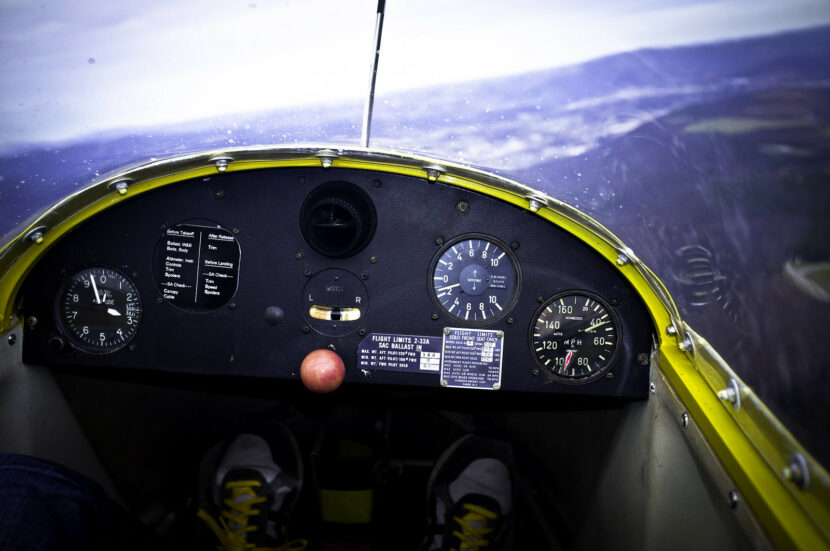
Thunk.
And then silence.
Third surprise: This is the first time I’ve ever been in the air without hearing an engine.
Only a quiet whoosh, the air over the aerodynamic glider. No engine. Not even the sound of tires on pavement. Just a breeze. This aluminum frame, stretched with painted canvas, was now fully entrusted with my life.
I watched the yellow cord fall slowly forward, dangling from the tow plane. The tow pilot turned harder left, and back down to land at the airport. My instructor banked our plane sharply to the right, and said it’s our job to get far out of the way.
With the tow pilot out of sight, there were no longer any objects near us.
Fourth surprise: It felt as if the plane wasn’t moving at all.
We practice turning left, turning right, going up and going down.
We looked for birds circling, and found some above a patch of dark trees on the ground. “There’s almost certainly a thermal over there, so let’s go!” and he helped me to guide the plane to the right spot. My instructor also casually told me he was no longer touching the controls.
I was flying!
An hour earlier I had no idea this would even be part of my day.
After a few minutes, I felt a shove, like a giant hand pushed on the wings to move me off course.
“You found it!” my instructor said, “that’s the thermal! The rising column of air lifts one wing more than the other, so you feel like it’s pushing you away. But turn into it.”
Maneuvering the glider into the correct spot, to ride invisible column of air, was confusing, and he did most of the work. Soon he asked, “Look at your vario. Right now, what does it say? Are we climbing or sinking?”
I was flabbergasted. The instrument panel showed that we were gaining altitude, almost as fast as the tow plane had been pulling us up.
We had no engine, but the plain was circling above a group of vultures. We were gaining altitude.
Now I was not only flying, but it was quiet and beautiful.
I have never felt more magical, more harmonious with nature, in my entire adult life.
I went on to have many more lessons, but I never finished earning my license. Throughout all these years I never felt I could spare the time and money. It would take around two weeks dedicated to lessons. Maybe I’ll get back to it someday. The most recent time I flew was in 2009, with photos below:

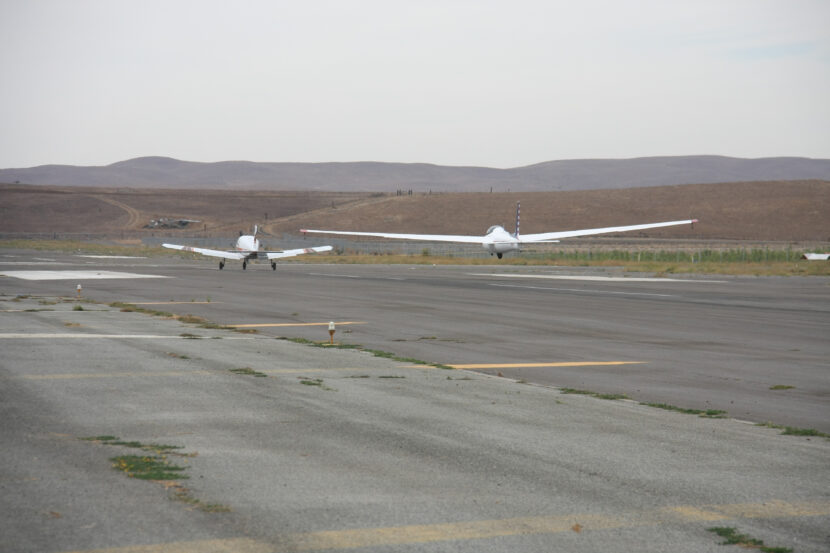


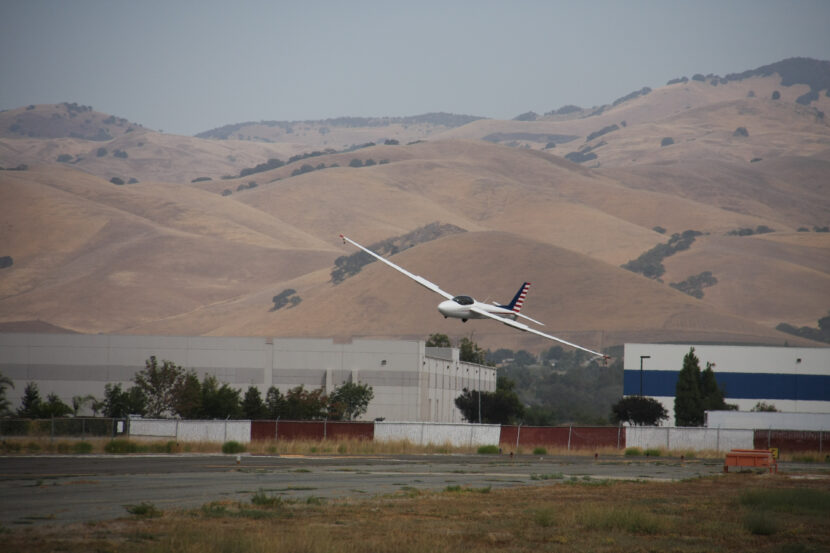
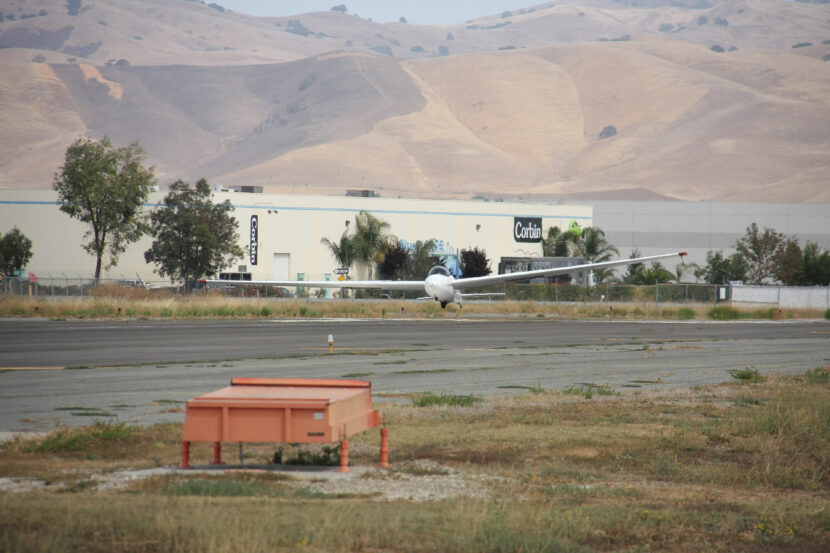


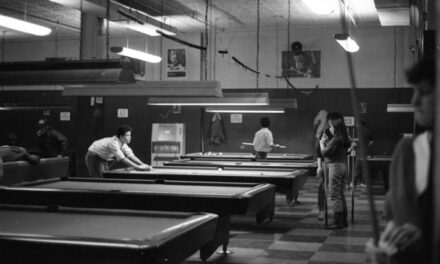
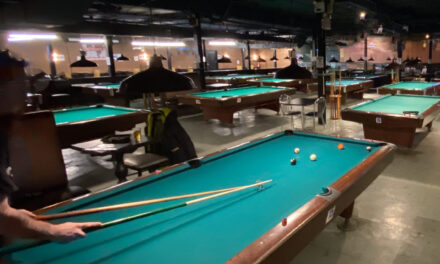

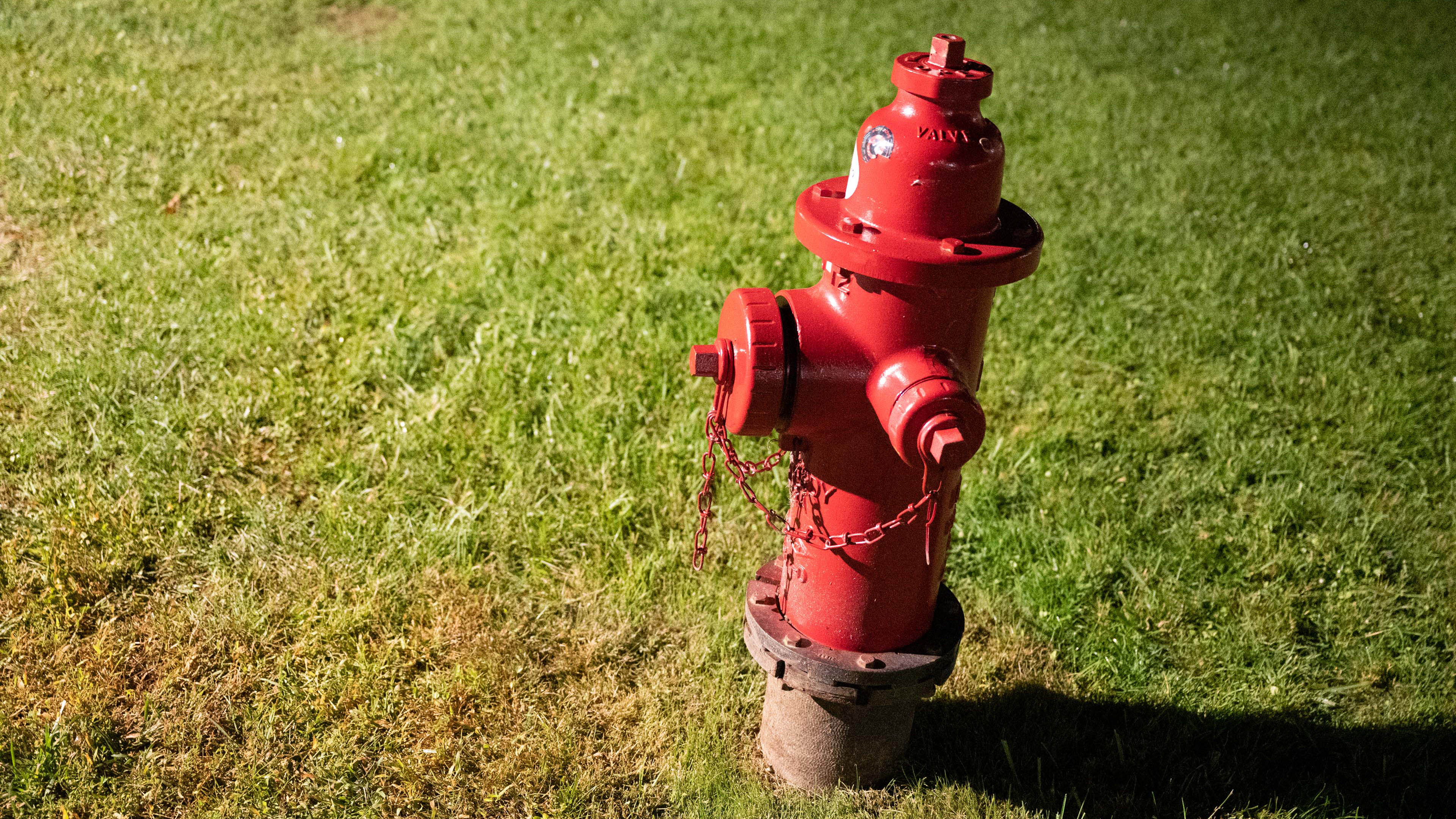
Awesome! Thanks for inviting me, very much enjoying your stories!
Were you channeling Frank McCourt when you wrote this? The senses you described on your first flight, both emotionally and tactile, remind me of him. Thank you for sharing your experience! There’s no substitute for flying; the adrenaline, the fear, the confidence in your teacher, trusting yourself when holding the controls…it took thousands of years for us to reach the skies and to be with the birds and the stars. Thank you for sharing not just your story but your first experience being in the sky.
Great story, Aaron! Must have been great to be up there without noise in such a pretty surround!